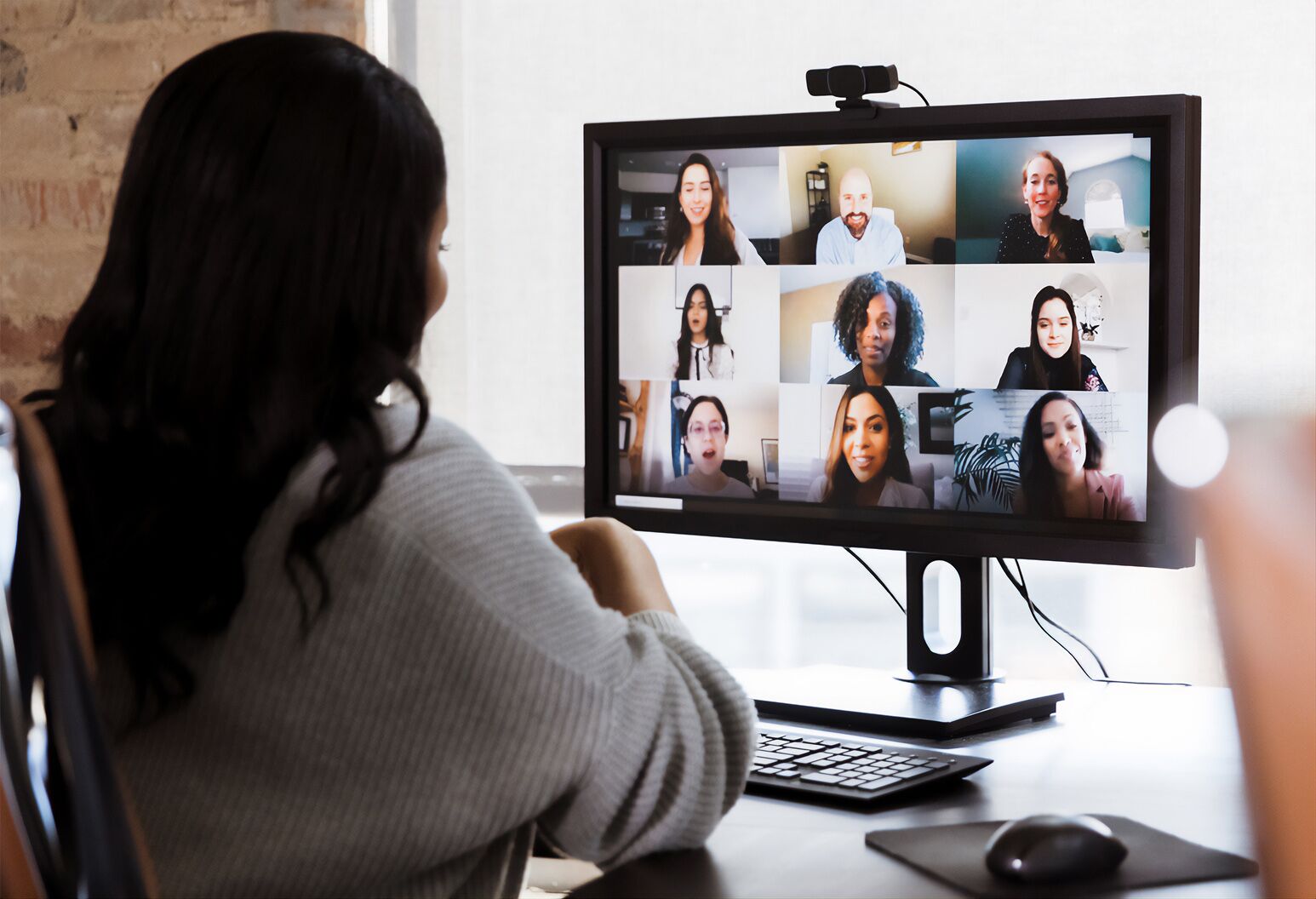culturally relevant stories
A Day In The Life Of An Internal Medicine Pro

Our expert advice to help you minimize the risks.
5 min read
A few months after the pandemic started, several people I know experienced strange health problems. My sister, a health care provider, complained that her sleep had grown worse. A film industry friend mentioned that his eyes were so dry and irritated by the end of the day, they hurt. Others mentioned inexplicable fatigue. I knew we were all grappling with stress and anxiety. But there was another reason people struggled with their health: they had all transitioned to working remotely and suddenly spent more time in front of screens than ever before.
Don’t worry, I’m not about to launch into a diatribe against screens. Screens have helped us stay connected during the pandemic, which has been crucial for our physical and mental health. Many of us have been able to continue to work, which wouldn’t have been possible without computers. And there are serious upsides to screens. (Online yoga, anyone?)
While we often lament the amount of time we’re spending on screens, they can actually be a lifeline—but for extended periods, they can have negative impacts on our health. That includes COVID-somnia, Zoom fatigue, eyestrain, and inactivity. And kids experience these problems, too.
To help you combat the most common screen-related ailments, here are some expert-approved tips.
It feels like there are a thousand reasons why we can’t sleep right now, but screens rank up there, especially if you stare at one past dark. Screens emit blue light, which suppresses the secretion of melatonin, a hormone that helps us sleep. A Harvard Medical School study found that reading on a blue-light-emitting device (such as a phone or iPad) several hours before bedtime caused participants to take longer to fall asleep, experience reduced melatonin levels, and feel less alert the next day.
Dr. Noah Rosen, MD, director of Northwell Health’s Headache Center, says that one of the best solutions is to create clear boundaries between work and home life, so you start work at a set hour and shut your computer off at a certain time each day.
You can try blue-light-blocking glasses to protect yourself from screens, but Rosen thinks that covering your devices with a blue-light-blocking screen protector might work better instead. That way, you block only the blue light emanating from your screens. During the day, we actually need blue light from the sun to maintain our circadian rhythms and help us sleep.
Best of all: avoid screens a few hours before bedtime.
Have you ever finished a video meeting and felt like you wanted to crawl into bed for a nap? That’s Zoom fatigue, and it can happen on any video chatting platform.
Human beings are wired to communicate both verbally and nonverbally. But on a video call, you can’t tell if the guy two slots down from you is shifting in his seat or is feeling agitated. At an in-person meeting, we could figure it out. We could also look out the window once in a while. (And we wouldn’t grow exhausted by constantly checking out our wrinkles and under-eye bags, displayed prominently on the screen.)
Weirdly, in video conferencing platforms, we also can’t look at one another in the eyes. For someone to look into our eyes, we need to stare at our camera. But to look into their eyes, we need to look at the screen. It’s a lot for our brains to handle.
“We feel tired after video meetings because we’re looking for those nonverbal cues and trying to be effective communicators,” says Laura Dudley, PhD, associate clinical professor of applied psychology at Northeastern University, “in a virtual space that doesn’t lend itself as well to it.”
Dudley says that one way to battle Zoom fatigue is to turn off the self-view camera, which takes away some of the effort we spend checking our own appearance during meetings. She also says that some people feel less fatigued when they switch from “Gallery View”—which shows all participants—to “Speaker View,” which displays one person at a time.
Her favorite solution, however, is to create breaks between meetings, rather than scheduling them back-to-back. At the beginning of a meeting, she often asks if everyone is OK stopping 10 or 15 minutes early. “People are usually very appreciative I’ve suggested that,” she says.
Another radical thought: if possible, talk on the phone instead.
Even before COVID, nearly two-thirds of Americans reported symptoms of digital eyestrain. These can include tearing, tired eyes, blurred vision, burning sensations, and general eye fatigue. With our increased screen time now, this is even more of a risk.
“When you’re on a screen, your eyes are focused about 2 feet away from you, for hours on end,” says Rosen. For most of us, that’s too much. He suggests that to protect their eyes, people spend 20 minutes every two hours focusing on something 20 feet away.
Now that so many of us are hunched over a laptop at our kitchen tables, we’re not getting enough exercise. We no longer walk to the bus or stroll the halls between meetings. It’s a recipe for obesity and all the health problems that accompany it.
It’s more important than ever to exercise, as obesity puts us in a higher risk category for COVID. One of the upsides of screens is that there are great exercise classes available, including virtual classes offered online. Or better yet: take a walk and ditch your screens altogether.
The Well is Northwell Health’s commitment to the future of health care. In this time of information overabundance, much of which is inaccurate, unhelpful, or even difficult to understand, Northwell Health is on a mission to make a difference as an honest, trusted, and caring partner. The site connects with consumers to provide them with personalized content that reduces their stress, makes them laugh, and ultimately feel more confident and capable on their healthcare journey.